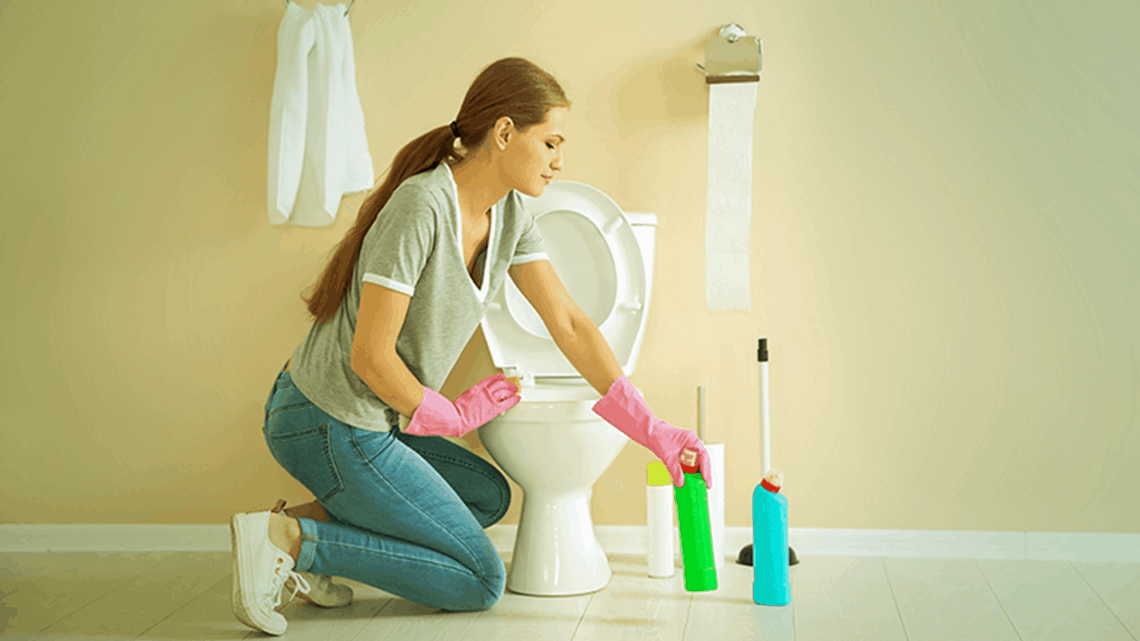Cleaning the grimiest places in your home
When you are all flared-up about your project clean-the-house, you often miss on grimy surfaces hiding in plain sight. Learn how to clean these common surfaces like a pro!
There should be no objections when we say there are dirty areas in almost every household because there are. However, when you see an increasing pile of mess accumulating in one corner, you are bound to get thinking as to how one would tackle this issue? Well, it might take a professional service to clean tough-to-remove stains on common surfaces but if you are up for it, we can let you know some simple ways to clean the grimiest places in your home.
You should also put into consideration the growth and proliferation of bacteria and viruses on filthy surfaces because illness-spreading germs are sometimes a headache to deal with. We know your family’s health is your top priority and nothing less than an immaculate house would do.
Let’s map down areas of concern first so that it becomes easy for you to focus according to your availability. Bathroom, kitchen, living room, and area with your pet feeding bowls and toys contain usually the grimiest surfaces. Now that we are done with the mapping, let’s focus on cleaning.
It’s not like you can just fill up a spray bottle with disinfectant cleaner and move from one area to another going on a cleaning spree and you’d be looking at a sparkling house at the end of day. Within these spaces, you need to focus on specific surfaces. For kitchen, these surfaces are dish sponges, cutting boards, stove knobs, coffee makers, and kitchen counters.
Cutting the kitchen grime
There are a lot of kitchen cleaning products that are known for their effective stain removal properties but you need to look for something that shouts efficiency and antibacterial both. Yes, with surfaces like cutting boards, it’s not enough to only clean because germs from traces of uncooked meat and poultry love to call these boards, their humble abode. Therefore, you need to do something extra.
Look for a kitchen cleaner like one offered by Dettol that claims to have germ-killing properties and boasts powerful stain-removal capabilities. If that is not enough, use soap and water to clean the surface, but with hands of course. You can wash stove knobs with hot water and liquid soap.
Microwave your dish sponges for two minutes daily and for kitchen counter, use a bleach solution that has been meticulously diluted. Kitchen sinks might get filled with gunk and all sorts of leftovers from washing vegetables and dishes, therefore make sure that you are washing the sink every now and then with a solution of bleach and water.
Tackling the living room mess
Wherever your children go, there’d be a mess to declutter but surely your living room just suits these little devils a bit more. Apart from your young ones, the family also likes to crowd your living room because that’s where the talk happens and frankly, you can’t say no to anyone.
Just run a quick scan and look for objects that are used by many such as TV remotes, game controllers, tablets, and other smart gadgets. It might get a bit hectic if you have your cousins coming over for a stay but that’s an irregularity. However, for everyday clean up try using disinfecting wipes on all of these objects. Also, clean out below cushions and vacuum weekly.
Cleansing your bathroom
Bathrooms are known for having a germ-o-philic environment and harbor bacteria such as clostridium difficile and others. Because there is use of water every now and then, the resultant dampness gives way to germs spread. If you are looking to clean your bathroom, focus on faucets, knobs, and switches.
Use disinfecting wipes to clean bathroom sinks and keep hand towels on fresh rotations throughout the week. Pay attention to bath towels by washing them in hot water and then dry them out properly. Don’t let toothbrush holder discolor by leaving them be for years and use a good bathroom cleaner to tackle the tiles.
Keeping the pet area clean
Your pet deserves nothing less than scrubbed food bowls and spotless water container. Because your fluffy little friend admires playing outside, he/she seldom brings in dust, dirt, and with it a ton of bacteria, in the house. This may result in you catching pet allergies as well.
Keep a solution of diluted bleach and water ready in case you see dirty feeding bowls. You can use this solution or hot soapy water to clean the bowls whenever you find it necessary. Just remember to scrub hard as these bowls can sometimes be full of sticky grime and dirt.
So, this is all about cleaning the grimiest places in your home. If you think you need any more help on the topic, please let us know. We’ll be more than happy to return your queries.
